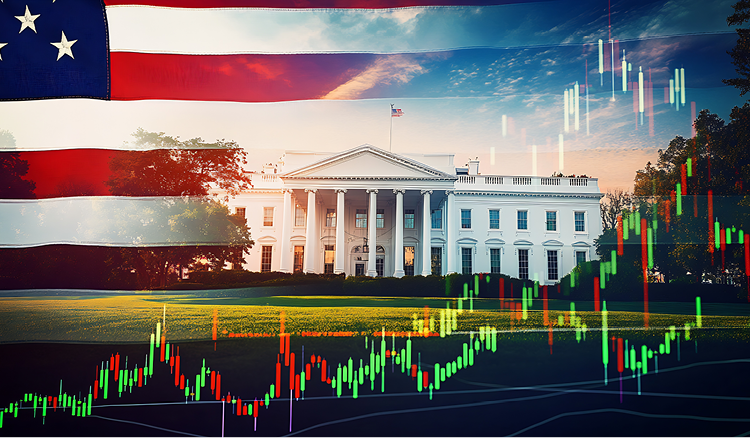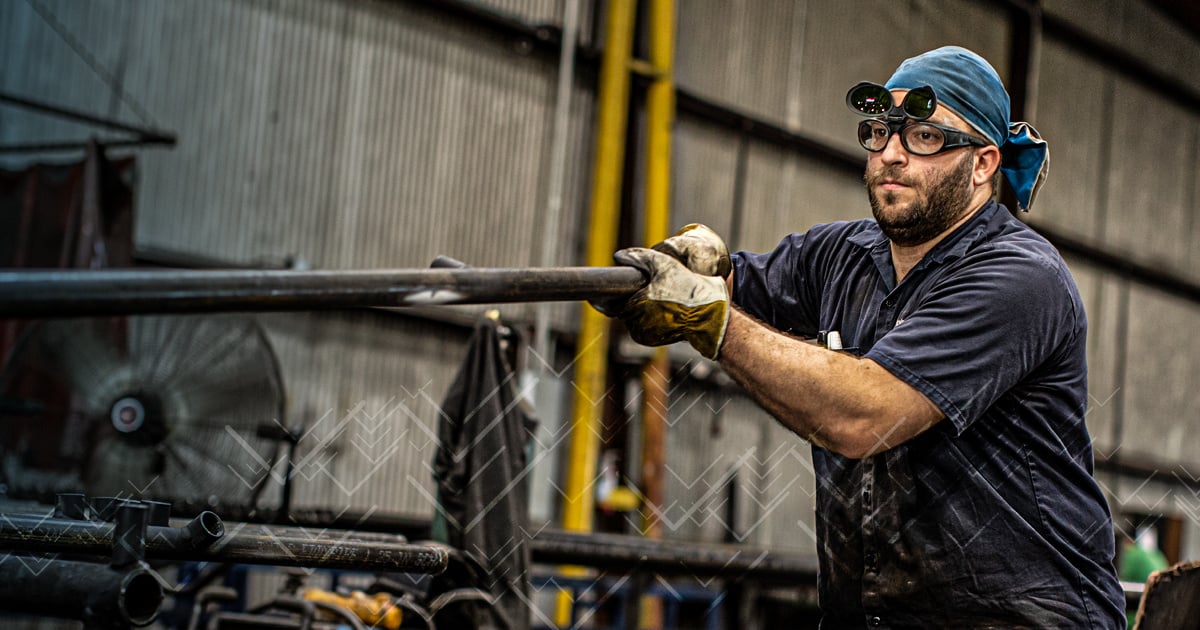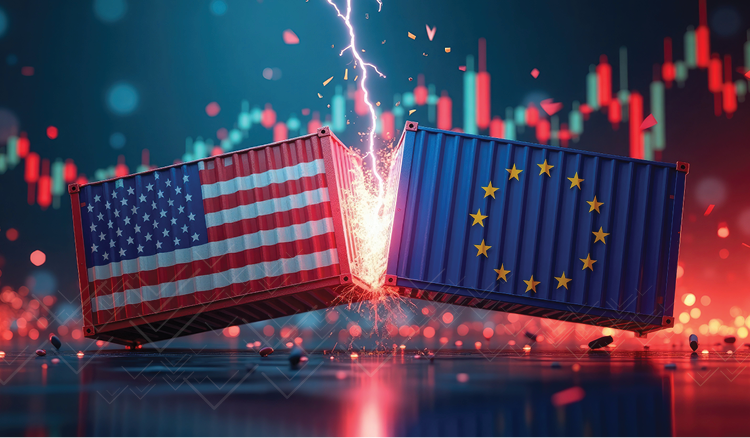Trump 2.0 Week 23 In Review: Discussing A Potential July Deadline Extension, Negotiations With Key Trade Partners, & GE’s $490M Investment
This week’s economic and trade landscape is marked by ongoing negotiations, new reshoring announcements, and the looming July tariff deadline. As the Trump administration considers extending tariffs amid stalled talks with key partners like Japan & the EU, the next few weeks are looking highly uncertain. Meanwhile, notable corporate developments, such as GE’s $490 million investment announcement, highlight the effectiveness of Trump’s tariffs in pushing manufacturers to reshore operations.
In this week’s recap, topics of discussion include:
- U.S-Mexico trade talks over steel tariffs
- The signing of the U.S.-China trade agreement
- A potential extension to the July tariff deadline
- Updates on negotiations with key trade partners
- GE’s $490M investment in U.S. manufacturing
U.S. and Mexico Close To Steel Tariff Deal
Mexico and the U.S. are reportedly nearing a deal to soften the impact of the 50% steel tariffs imposed on June 4 under Section 232. Discussions center on a tariff-rate quota (TRQ) system that would allow a set volume of Mexican steel—possibly around 2.8 million metric tons annually, based on 2015–2017 averages—to enter the U.S. at reduced tariffs. Imports within this quota may face a 10% charge, while shipments exceeding the quota would incur the full 50% rate. Although current negotiations focus on steel, officials are also considering a similar quota-based exemption structure for aluminum exports, though specifics have not been finalized.
The broader context of these talks includes the Biden administration’s reversal of many prior trade exemptions and the intensification of Section 232 tariffs to 50% on steel and aluminum. Industry voices in both countries, including Mexican steel giant Ternium, have called for a resolution, suggesting tighter USMCA rules of origin to prevent third-country circumvention. These discussions are also unfolding alongside broader trade pressures, including the July 9 deadline for a wider reciprocal tariff pause and a recent U.S. trade court decision that overturned Trump-era “reciprocal tariffs”—though it did not affect the steel and aluminum duties at the heart of these U.S.–Mexico talks. Overall, this agreement could serve as a template for resolving other trade flashpoints between the two nations.
China Confirms U.S. Trade Deal
On Friday morning, China confirmed that it had reached an agreement with the U.S. to accelerate the export of rare earths, marking a significant development amid ongoing trade negotiations. Chinese officials announced on June 27 that both countries have approved the details of the deal, with President Trump stating that they “just signed with China yesterday.” The agreement aims to ensure a steady supply of rare earths—crucial components in electronics, defense systems, and renewable energy—addressing a longstanding bottleneck that has hindered U.S. manufacturing and strategic industries. While the rare earths breakthrough offers hope for de-escalation, many contentious areas—such as tariffs on goods, intellectual property rights, and technology transfer—remain unresolved, leaving the broader U.S.-China trade relationship still fraught with challenges. Nonetheless, officials from both sides express optimism about continued cooperation.
Trump May Extend Tariff Deadline, Says CEA Chair Stephen Miran
On Thursday, The White House's Council of Economic Advisers chairman, Stephen Miran, indicated that the Trump administration is likely to extend the tariff pause for countries engaging in good-faith negotiations, emphasizing that disrupting ongoing negotiations with sudden tariff hikes would undermine progress. Miran also said that after all deals are done, the aggregate tariff rate may not fall materially below the current 10% universal tariff. However, individual countries may fare better or worse.
"A few countries may be making such aggressive concessions," he explained. "They convinced the president to lower tariffs below 10%. There are other countries that are just going to be stubborn and decide no. And then they'll have the 'Liberation Day' tariff snap back up on them."
Despite Miran’s statement, it’s still unsure if this will come to fruition or not. Treasury Secretary Bessent made a similar statement a few weeks back to Congress, although Trump later rebuked this claim and said he would instead be sending out new tariff rates in the near future. It’s now been two weeks since Trump made this claim though, and he has yet to follow up on this or elaborate on his plans.
The bottom line: Nothing is set in stone on tariffs as President Trump's July 9 deadline quickly approaches.
Trade Negotiation Updates
European Union
This week, the EU received a new “two‑pager” trade outline from the U.S., presenting only broad principles without addressing specific industrial sectors. This comes as a July 9 deadline approaches—set by President Trump—for extending the current 10% reciprocal tariff pause. Meanwhile, tariffs such as 25% on cars and 50% on steel and aluminium remain—and could deepen—if no accord is struck. The EU Commission, led by Ursula von der Leyen, is actively reviewing the proposal and has pledged to defend EU interests while also preparing a fallback strategy that includes potential retaliatory tariffs on approximately €95 billion of U.S. products, as well as proposals for a digital advertising levy targeting U.S. Big Tech.
Behind the scenes, member states are divided: Germany's Chancellor Friedrich Merz is pushing for a fast, no‑frills agreement to ease pressure on exporters in critical sectors like autos, chemicals, pharmaceuticals, steel and aluminum. France’s Emmanuel Macron, however, insists the deal must protect EU sovereignty and services, and must not be rushed at the expense of fairness. Brussels is also reportedly prepared to offer concessions such as easing non‑tariff barriers, exploring tariff‑rate quotas, boosting U.S. LNG imports, and even accepting a flat 10% tariff ceiling on EU exports—though the EU still hopes to negotiate something better. At the same summit, von der Leyen also floated the idea of forming a new trade body alongside CPTPP nations to overhaul the struggling WTO dispute‑resolution mechanism—hardening the EU’s leverage if talks falter.
Japan
On Wednesday during his departure for Washington to lead the seventh round of trade negotiations, Japan’s chief negotiator Ryosei Akazawa reiterated that Japan strongly opposes the United States’ 25% auto tariffs, emphasizing that Japanese automakers produce around 3.3 million vehicles annually in the U.S.—more than double their exports—and have invested over $60 billion, creating 2.3 million jobs. The tariffs, part of broader measures set to go back into effect on July 9 if no deal is reached, include an increase in tariffs from 10% to 24%, a 25% levy on imported cars and parts, and a 50% tariff on steel and aluminum. Negotiations have now been ongoing for over two months without resolution, with Japan prioritizing protecting its vital auto industry amid a trade surplus last year of approximately $59.4 billion, mainly driven by cars and parts. Akazawa also highlighted that roughly 300,000 vehicles produced by Japanese automakers in the U.S. are exported globally, contributing further to the U.S. trade balance. Despite the pressure, Japan remains committed to resolving tariff disputes within a comprehensive agreement that addresses sector-specific levies, and while a July 9 deadline looms, Tokyo is determined not to weaken its negotiating position by making concessions prematurely.
South Korea
South Korea has reiterated its request for exemptions from U.S. tariffs affecting key industries such as cars and steel, following its first high-level meeting with U.S. officials since Minister Yeo Han-koo assumed office. During talks with U.S. Commerce Secretary Howard Lutnick and Trade Representative Jamieson Greer in Washington this week, Yeo emphasized South Korea’s strong democratic mandate to advance negotiations, which had previously stalled, and highlighted the need to expand cooperation beyond tariffs into manufacturing and advanced technologies. Both sides also reaffirmed their commitment to reaching a mutually beneficial agreement prior to the July 9th deadline, though no specific timeline was given.
These discussions come at a critical time as U.S. tariffs continue to impact South Korea’s export-driven economy, especially in autos, semiconductors, and batteries.
India
Trade negotiations between India and the United States have stalled ahead of the July 9 deadline for the US's proposed 26% reciprocal tariff. The US has demanded India lower tariffs on farm goods, automobiles, and alcoholic beverages, however Indian officials say these demands will be difficult to meet without clear commitments from the US. India on the other hand seeks a waiver from the upcoming tariff and reductions on existing tariffs on steel and auto parts, although they claim the US has not yet agreed to these demands.
Prior to the July 9 deadline, an Indian delegation is expected to travel to Washington, however, expectations for an immediate deal are now low. Both countries have also agreed to work towards a broader trade agreement rather than rushing an interim deal, although some are speculating that high-level intervention might still help bridge the gaps before the deadline.
Vietnam
On Wednesday, Vietnamese Prime Minister Pham Minh Chinh expressed optimism about reaching a trade deal with the United States before the existing pause on 46% reciprocal tariffs on Vietnamese exports expires in early July. Speaking at the "Is Asia's Century at Risk?" panel during the World Economic Forum in Tianjin, China, Chinh stated that Vietnam’s government maintains frequent communication with the Trump administration regarding tariffs. He hoped that a positive outcome would be achieved sooner than the two-week timeframe, emphasizing the shared understanding between Vietnam and the U.S. on tariff issues and expressing confidence that favorable results are possible.
Vietnam, a key manufacturing hub in Southeast Asia, has conducted several rounds of negotiations with the U.S., with the latest concluding recently. The country aims to avoid the reinstatement of the high tariffs, which were initially imposed due to Vietnam’s significant trade surplus with the U.S., which reached $12.2 billion in May—up nearly 42% year-on-year and 17% from April. U.S. officials have submitted tough trade demands, including reducing the use of Chinese technology in products assembled in Vietnam for export to the U.S. In response, Vietnam has stepped up efforts to combat illegal trans-shipment of goods, particularly from China, and has shown willingness to lower non-tariff barriers and increase imports of U.S. goods such as agricultural products, energy, and airplanes, although no formal agreements have yet been finalized.
Pakistan
Pakistan and the United States have agreed to conclude their ongoing trade negotiations next week, according to a statement from Pakistan’s finance ministry following a recent meeting between Pakistan’s Finance Minister Muhammad Aurangzeb and U.S. Commerce Secretary Howard Lutnick. The negotiations primarily focus on reciprocal tariffs, with the broader aim of resetting economic relations amid changing geopolitical alliances. Pakistan is keen to avoid steep U.S. duties on its exports, which currently face a 29% tariff under measures aimed at countries with large trade surpluses. Pakistan’s trade surplus with the U.S. was approximately $3 billion in 2024. To address this imbalance, Islamabad has proposed increasing imports of U.S. goods, including crude oil, and has discussed expanding investment opportunities for U.S. firms, especially in sectors like mining. The two countries are also exploring the establishment of a long-term strategic and investment partnership, with discussions including public-private partnerships and regulatory reforms.
--------------------
Another obstacle in these ongoing trade negotiations stems from the prevailing uncertainty over whether additional tariffs covering metals, semiconductors, pharmaceuticals, and critical minerals—will still apply. The U.S. Commerce Department is expected within weeks to finalize its investigations into these sectors, with potential recommendations to impose levies under Section 232 of the Trade Expansion Act. While negotiations are underway to reduce country-specific tariffs, the looming threat of sectoral tariffs introduces another layer of unpredictability, leaving governments and industries unsure of the future landscape. This uncertainty complicates efforts to reach comprehensive trade agreements, as industry-specific tariffs could prove more disruptive than the country-specific reciprocal tariffs.
New Investments in U.S. Manufacturing
GE Announces $490M Investment
On Thursday, Governor Andy Beshear announced a significant investment by GE Appliances, a Haier company, which will invest $490 million and create 800 new full-time jobs at its Louisville headquarters in Jefferson County. This expansion marks one of the largest private-sector economic development projects during the current administration and involves reshoring production of key laundry models from China to Louisville’s Appliance Park. The project will modernize Building 2 with advanced automation and robotics, with new production scheduled to begin in 2027, reinforcing Louisville as the global hub for GE Appliances.
This investment builds on GE Appliances’ prior growth, including a $450 million expansion in 2021 that added over 1,000 jobs and further solidified Appliance Park as the largest of its kind in the U.S. Since 2016, the company has invested over $3.5 billion in U.S. manufacturing, contributing significantly to Kentucky’s economy with a reported $12.8 billion impact in 2023. With over 8,000 employees at Appliance Park, the facility continues to serve as the company’s global headquarters, supporting production, engineering, and distribution operations across 750 acres.
-----------------
While there weren’t any other major investments announced this week, at least 6 dozen companies have announced significant new investments in U.S. manufacturing since the start of Trump’s second term. Click here for a full list. You can also find more information on recent announcements in previous recap articles, which you can find on our Navigating Trump 2.0 page.
Turning Volatility & Uncertainty Into Opportunity
With global trade negotiations dragging on, legal battles over reciprocal tariffs unresolved, and new sectoral tariffs on the horizon, uncertainty is the only constant. It’s no surprise that many business leaders are frozen, reluctant to commit to hiring or invest in growth when the future is so unclear. This is why according to the NAM’s Q2 2025 survey, more than 36% of manufacturers are delaying or canceling planned investments this year. It’s an understandable reaction — traditional hiring models and restrictive temp agency contracts leave little room to maneuver when the market suddenly shifts.
That’s where Veryable’s on-demand labor model makes a critical difference. By giving manufacturers and distributors the ability to expand or contract their workforce daily, Veryable helps them stay responsive without the risks of permanent hiring or restrictive temp contracts. Beyond risk management, on-demand labor can turn volatility itself into a growth opportunity. With a labor pool at the ready, manufacturers and distributors can confidently pursue new business, launch product lines, or expand into seasonal markets knowing they have immediate access to skilled workers. This allows them to capitalize on opportunities others are afraid to pursue. In essence, Veryable’s on-demand labor model transforms labor from a fixed constraint into a dynamic asset, empowering businesses to treat volatility not as a threat, but as a strategic advantage to capture growth.
The bottom line - in a world of uncertainty, operational agility is your greatest asset.
To learn more about how Veryable can help you maximize agility and turn uncertainty into a catalyst for growth, check out the articles below or contact us.
Why Those Who Move First Win The Most
Profiting From Preparation: Getting Paid to Build Your Operational Ark With Veryable
How Veryable Enable Rapid Business Pivots
Asset Light: How “As a Service” Unlocks Growth and Eliminates Waste
U.S. Manufacturing Today Podcast
For more information and insights, make sure to check out our new U.S. Manufacturing Today Podcast. Hosted by our Head of Reindustrialization, Matt Horine, and featuring interviews with business leaders as well as industry experts, this podcast covers the latest trends and shifts affecting the U.S. manufacturing and distribution sectors.
In this week’s episode, Hirebotics Co-founder Rob Goldiez joined host Matt Horine to discuss how their easy-to-deploy, cloud connected cobots support workers and boost output - especially in skilled trades like welding - while delivering ROI in under a year.
You can find this podcast on our website, Spotify, Apple, YouTube, and PocketCasts.
Additional Resources
Navigating Trump 2.0
For additional insights into the developments under Trump 2.0, visit our “Navigating Trump 2.0” page. There you'll find comprehensive information on recent and potential future changes, along with a collection of articles offering guidance for manufacturers and distributors on how to succeed in this rapidly evolving environment.
Veryable Vendor Network
The Veryable Vendor Network (VVN) is an ecosystem of manufacturing, warehousing, and logistics companies that utilize Veryable to deliver quality products and world-class service to their customers regardless of demand. If you’re looking for new domestic suppliers, submit a form and our team will be in contact shortly after.
Previous Posts
Trump 2.0 Week 22 In Review: Discussing The UK Trade Deal, Stalled Negotiations With The EU and Japan, and New Tariff Threats
The Future of Manufacturing and Logistics
Create a free business profile today to explore our platform.






